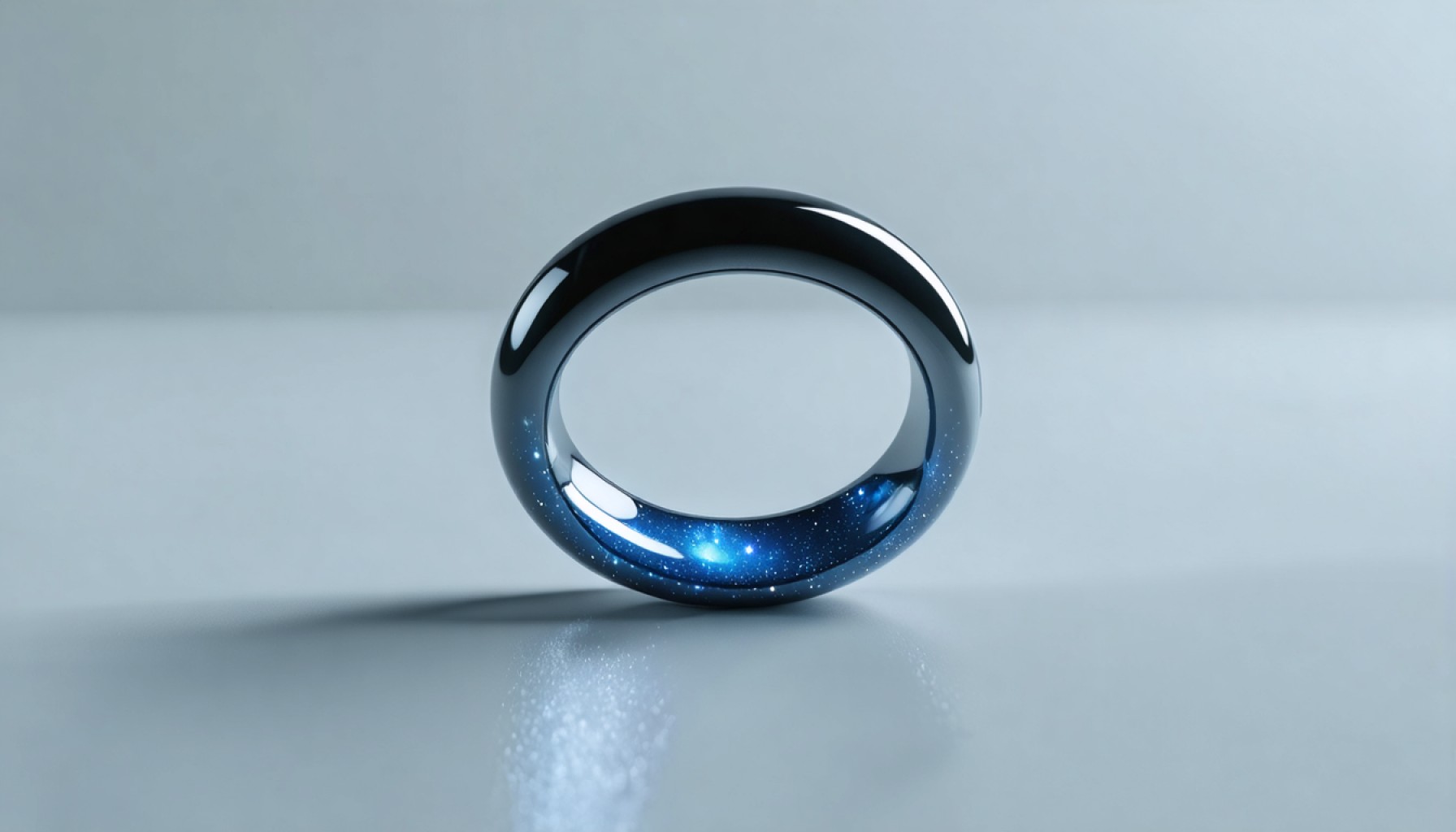- Samsung is set to launch the Galaxy Ring 2 in late 2025 with revolutionary all-solid-state batteries, marked as the “dream battery”.
- The new battery technology aims to enhance energy density from 200Wh/L to a remarkable 360Wh/L, addressing wearables’ battery life challenges.
- Samsung Electro-Mechanics is spearheading this innovation, with plans to extend battery advancements to other devices like earbuds and smartwatches by 2027.
- High production costs and expensive materials like lithium sulfide pose significant challenges to Samsung’s ambitious rollout.
- Samsung aims to increase production capabilities and further boost energy density to 400Wh/L by 2026, highlighting a bold commitment to wearable tech revolution.
Samsung is poised on the brink of a technological leap, one that transforms the everyday wearable into an innovation powerhouse. The anticipated Galaxy Ring 2, slated for release in the latter months of 2025, is set to redefine the landscape of wearable devices, emerging from the shadows to unveil a potent blend of design and cutting-edge science. This next-generation device will mark the debut of all-solid-state batteries—a centerpiece of Samsung’s ambitious vision for future tech.
Envision a battery offering unprecedented performance metrics, capable of packing more power in less space. The Galaxy Ring 2’s new power source, dubbed the “dream battery”, promises to enchant consumers with battery life previously thought impossible. Whereas the current standard rests at an energy density of 200Wh/L, Samsung aims to leap to an astonishing 360Wh/L by the time the ring embeds itself onto your finger. This bold step caters directly to an ongoing issue plaguing wearable tech: insufficient battery life that frequently disrupts user experiences.
The orchestrator of this technological ballet, Samsung Electro-Mechanics, is not just focused on perfecting the Galaxy Ring. The reach of this battery innovation extends beyond the ring, plotting a trajectory to revolutionize the entire portfolio of Samsung’s wearables. The modest size of true wireless earbuds seems destined for extraordinary efficiency by 2026, with smartwatches teed up for transformation as 2027 approaches. Such aspirations underline a strategic roadmap that extends into every facet of our digital lives, hinting at a future where recharging becomes an afterthought.
Yet, no venture of such magnitude progresses without its burdens. Crafting these all-solid-state batteries camouflages steep challenges beneath its sleek promise. High production costs loom over Samsung’s ambitious horizon, casting shadows of doubt among market watchers. The initial Galaxy Ring, costing around $370, could only hint at the price escalations that might accompany its successor. The exotic ingredients essential for these batteries, such as lithium sulfide, are costly treasures, elevating the stakes in Samsung’s gamble to lead the charge.
Despite the formidable financial wilderness, Samsung’s resolve appears unyielding. Earlier this year, Samsung Electro-Mechanics boldly announced at CES its plans to nurture mass production facilities, envisioning an energy density increase to 400Wh/L by 2026. It’s a battle cry for innovation set to echo through boardrooms and living rooms alike.
The impending launch of the Galaxy Ring 2 is more than just a product release; it’s a testament to humanity’s unyielding quest to harness technology’s full potential and redefine the conceivable. Samsung stands at the helm, daring to render the remarkable into reality—a vision where our devices breathe longer and live smarter, driven by the sheer power of a dream-born battery.
What You Need to Know About Samsung’s Next Big Leap in Wearable Tech
Unveiling the Galaxy Ring 2: The Future of Wearables
Samsung is on the verge of a technological evolution that could change the landscape of everyday wearables. The upcoming Galaxy Ring 2, anticipated for release in late 2025, not only promises to revolutionize battery technology but also to enhance user experience and efficiency in wearable devices. At the heart of this innovation lies the all-solid-state battery—a groundbreaking feature expected to redefine energy storage capabilities.
Key Features of the Galaxy Ring 2
1. All-Solid-State Battery: Known as the “dream battery,” this innovation is set to deliver unprecedented performance with an expected energy density leap from the current 200Wh/L to an impressive 360Wh/L. This means more power in a smaller space, addressing the perennial problem of insufficient battery life in wearables.
2. Extended Battery Life: With this new battery technology, recharging interruptions will become increasingly rare, significantly enhancing the user experience.
3. Redefined Wearable Tech: Following the Galaxy Ring 2, other Samsung wearables such as true wireless earbuds and smartwatches are slated for similar advancements by 2026 and 2027, respectively.
Implications and Industry Trends
Why It Matters
– Market Forecasts: With Samsung spearheading this change, expect a surge in demand for more efficient, longer-lasting wearables. The global wearable technology market could potentially expand as consumers seek devices that match their on-the-go lifestyle.
– Eco-Friendly Impact: All-solid-state batteries are not only efficient but also more sustainable. They reduce the need for frequent recharging, aligning with environmental goals by decreasing electrical waste.
Challenges and Controversies
– Production Costs: Developing all-solid-state batteries remains an expensive endeavor. The use of costly materials like lithium sulfide raises questions about the retail price of the Galaxy Ring 2 and other future products. The first Galaxy Ring was priced around $370, hinting at possible price hikes for its successor.
– Technological Hurdles: Despite its promise, the transition from traditional lithium-ion batteries to all-solid-state alternatives involves overcoming significant engineering challenges.
Real-World Use Cases
– Health and Fitness: Enhanced battery life means continuous monitoring of health metrics such as heart rate and sleep patterns without frequent charges.
– Smart Home Integration: Advanced sensors powered by high-density batteries can lead to new features in smart home connectivity, offering seamless interaction between devices.
Future Predictions
– Energy Density Increase: Samsung aims for an energy density of up to 400Wh/L by 2026, further propelling the efficiency and longevity of their devices.
– Broader Adoption: As the technology matures, expect wider adoption across different tech sectors, potentially influencing everything from smartphones to electric vehicles.
Quick Tips and Actionable Insights
– Upgrade Timing: If you’re planning to invest in new wearable tech, consider waiting for the Galaxy Ring 2 or subsequent updates, which promise longer life and better efficiency.
– Stay Informed: Keep an eye on Samsung’s announcements for any updates, as technology in this field is rapidly evolving.
For More Information, Visit
– Samsung
The Galaxy Ring 2 is set to be more than just another piece of tech; it represents a triumph of innovation, a future where recharging might soon become a thing of the past. As we anticipate its release, the potential impact on both consumers and the broader market is enormous. Samsung’s vision portends a technological future where our devices are not only smarter but also attuned to our modern, mobile lives.







